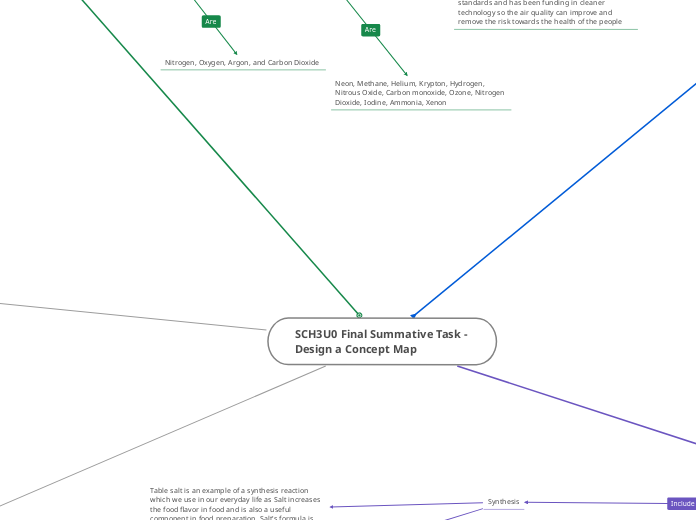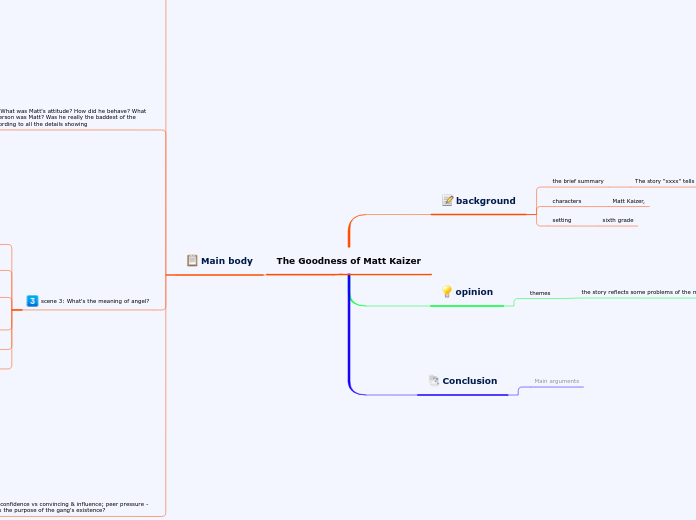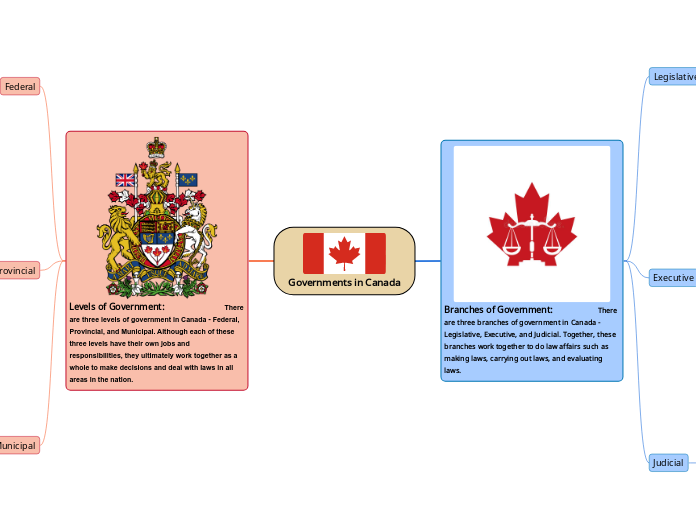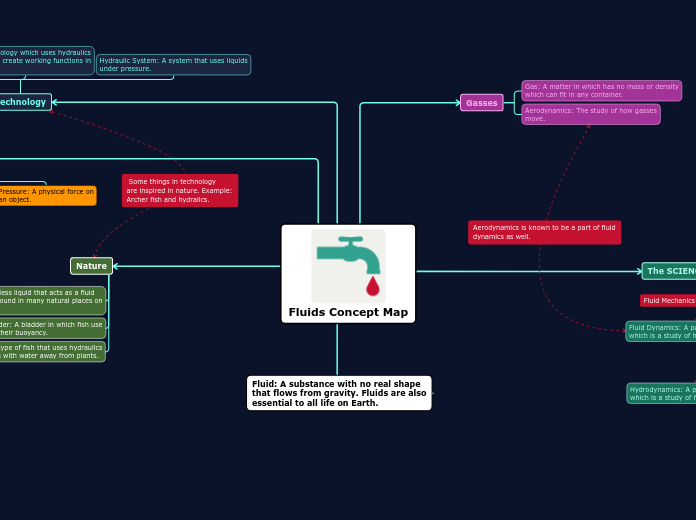SCH3U0 Final Summative Task - Design a Concept Map
Gasses and Atmospheric Chemistry
Components of Earth's Atmosphere
Minor Components
Neon, Methane, Helium, Krypton, Hydrogen,
Nitrous Oxide, Carbon monoxide, Ozone, Nitrogen
Dioxide, Iodine, Ammonia, Xenon
Major Components
Nitrogen, Oxygen, Argon, and Carbon Dioxide
Avogadro's Law
the diatomic theory
that gasses such as Hydrogen, Oxygen, Fluorine, Bromine, Iodine Nitrogen, and Chlorine have two atoms instead of one
Scientists develop the knowledge based on the stoichiometry of reactions with gases as know they can calculate the amount of moles easily by checking the volume of the gas
If the volume of a gasses are equal then the number of molecules are also equal
Air Quality
On the world
gets impacted from power plants, power generation, wildfires, fuel emissions, and ozone emissions
In Toronto
Currently the air quality level in Toronto is at a high risk towards the health of the population in Toronto
Of the wildfire's in Quebec. The bad air quality due to the wildfires are getting spread to Toronto and many other countries
Canada's government has created air quality standards and has been funding in cleaner technology so the air quality can improve and remove the risk towards the health of the people
KMT
Kinetic molecular theory tells us that gas particles are always moving and create perfectly elastic collisions
gas particles are heated, they cause more collisions since they move faster
gas particles are cooled, they cause less collisions since they move slower
Gasses Laws
Ideal Gas Law
Is
The relationship between pressure, temperature, and volume with the given mass
The formula for ideal gas law is PV=nRT
P stands for pressure, V stands for volume, n stands for number of moles, R is the constant which is 8.31, and T stands for temperature
Dalton Law
That the total amount of pressure applied by a mixture of gasses is the same as the sum of the partial pressures of the gasses in the mixture
The formula for Dalton's Law is Ptot= Pa+Pb+Pc
Pa, Pb ,Pc are the partial pressures
Combined Gas law
The combination between Boyle's law, Gay-Lussac's Law, and Charles law.
The connection between pressure, temperature, and volume
As pressure increases temperature also increases but volume decreases vice-versa
The formula for combined gas law is P1V1/T1 = P2/V2/T2 P1 stands for pressure 1, V1 stands for volume 1, P2 stands for pressure 2, and V2 stands for volume 2 T1 stands for temperature 1, and T2 stands for temperature 2
Charles Law
The connection between the volume and temperature of a gas
That the volume of a gas at constant pressure is corresponding to the temperature of a gas
The formula for Charles Law is V1/T1 = V2/T2
V1 stands for volume 1, T1 stands for Temperature 1, V2 stands for volume 2, and T2 stands for Temperature 2
Gay-Lussac's Law
The connection between pressure and temperature of a gas
That the pressure of a gas is corresponding to the temperature of a gas when mass and volume are constant
The formula for Gay-Lussac's law is P1/T1 = P2/T2
P1 stands for pressure 1, T1 stands for temperature 1, P2 stands for pressure 2, and T2 stands for Temperature 2
Boyle's Law
the connection between pressure and volume at a fixed temperature
That a volume of a gas is corresponding to the the pressure being applied at a fixed temperture
The formula for Boyle's law is P1V1=P2V2
P1 stands for pressure 1, V1 stands for volume 1, P2 stands for pressure 2, and V2 stands for volume 2
Chemical Reactions
Decomposition
Digestion of food in our body or animals body's are an example of a Decomposition reaction which we do in our everyday life. After we eat the food, it digests and In the process of digestion of food carbohydrates, proteins, fats break down into simple substances which provide us energy to do work.
The environmental impact is when animals such as cattle create methane gas which gets released into the atmosphere, which is harmful to the environment
A compound is broken down into simpler compounds, or all the way down to the elements that make it up. The formula for a Decomposition reaction is AB ----> A + B.
Synthesis
Table salt is an example of a synthesis reaction which we use in our everyday life as Salt increases the food flavor in food and is also a useful component in food preparation. Salt's formula is Na+ Cl ----> NACl.
A compound is made from simpler materials. The formula for a synthesis reaction is A + B ----> AB.
Combustion
Burning wood is an example of a combustion reaction which has a impact on the environment. People burn wood on different occasions such as when you go camping, people burn wood to set a campfire which provides light and warmth. However burning wood leads to co2 getting released into the atmosphere which is bad as it leads to climate change.
A compound containing carbon and hydrogen(and sometimes oxygen) combines with oxygen gas to produce carbon dioxide and water. The formula for a Combustion reaction is CxHy(Oz) + O2-----> CO2 + H2O.
Double displacement
When Sodium Hydroxide(NaOH) reacts with Hydrochloric acid(HCL) it creates a double displacement reaction as it becomes NaCl + H2O. This reaction creates salt which is used in our everyday life.
The positive and negative ions in two compounds switch places. The Positive ions go with negative ions and the negative ions go with positive ions. The formula for a double displacement reaction is AB + CD ----> AD + BC.
Single displacement
An example of a single displacement reaction which we use in our everyday life occurs when potassium (K) reacts with water (H2O). A solid compound named potassium hydroxide (KOH) forms, and hydrogen gas (H2) is set free. Potassium hydroxide is a type of lye specifically used to make liquid soap. The equation for the reaction is: 2K + 2H2O → 2KOH + H.
One element that starts out by itself replaces another element in a compound, kicking it out. The formula for a single displacement reaction is A + BC ----> B + AC
Matter Trends and Bonds
Periodic Trends
Subtopic
Quantities in Chemical Reactions
Solutions and Solubility
origins and effects of water pollution









